
How We Say Good-Bye
A child crouches at the edge of the ocean. The receding wave leaves a tiny, beautiful silver and black fish. It is dead. The child declares to her mum: “I will bury it.” She begins rapidly to dig a hole in the fine gravelled sand. Her mothers offers to help. “No. I want to do it myself.” She lays the tiny fish in its grave, then carefully fills it in with sand, smoothing over the top with her competent, little hands. Death has unexpectedly joined us, as death is often wont to do, on this sparkling summer morning. A small death beside a vast ocean. A small girl performing a huge and ancient rite.
Cynthia Patterson
Retired Anglican Reverend and resident of Barachois
What did this child know in August 2025 of burial rites? Had she participated in or witnessed the burial of a pet, a family member? How we say good-bye reflects our conscious and unconscious attitudes to death. As our western world, including the Gaspesie, seeks to distance ourselves from the reality and inevitability of death, direct engagement with centuries old rites becomes ever more rare.
Another little girl first engaged with final illness and death at the age of two and a half. It forms her first memory. The year is 1957-1958 and she sits on the back stairs of what was then the Kruse boarding house in Gaspe Harbour. She and her cousin listen as the town doctor steps out of their great- great auntie’s bedroom and reports in low tones to the mothers and great aunties waiting in the hall. On a different day, we creep down those same back stairs and see our great-great auntie in a long wooden box on a table in the bay window of the parlour. How did these little ones know the two events were connected? A new word had been whispered into their small vocabulary: Death. Before knowing about capital letters, they understood this was a Big Word.
The grip of death, even when only dimly understood, does not loosen easily. For years one of the children thought wicker plant-stands in windows might be caskets. When a dead bird was found on the lawn, she knew its fragile life had somehow to be honoured. Graves were dug at a respectful distance from the house, in the soft shade of a fir tree, surrounded by a fence of white painted popsicle sticks. When an over zealous mower of lawns wiped out the entire bird cemetery, she knew it was a desecration.
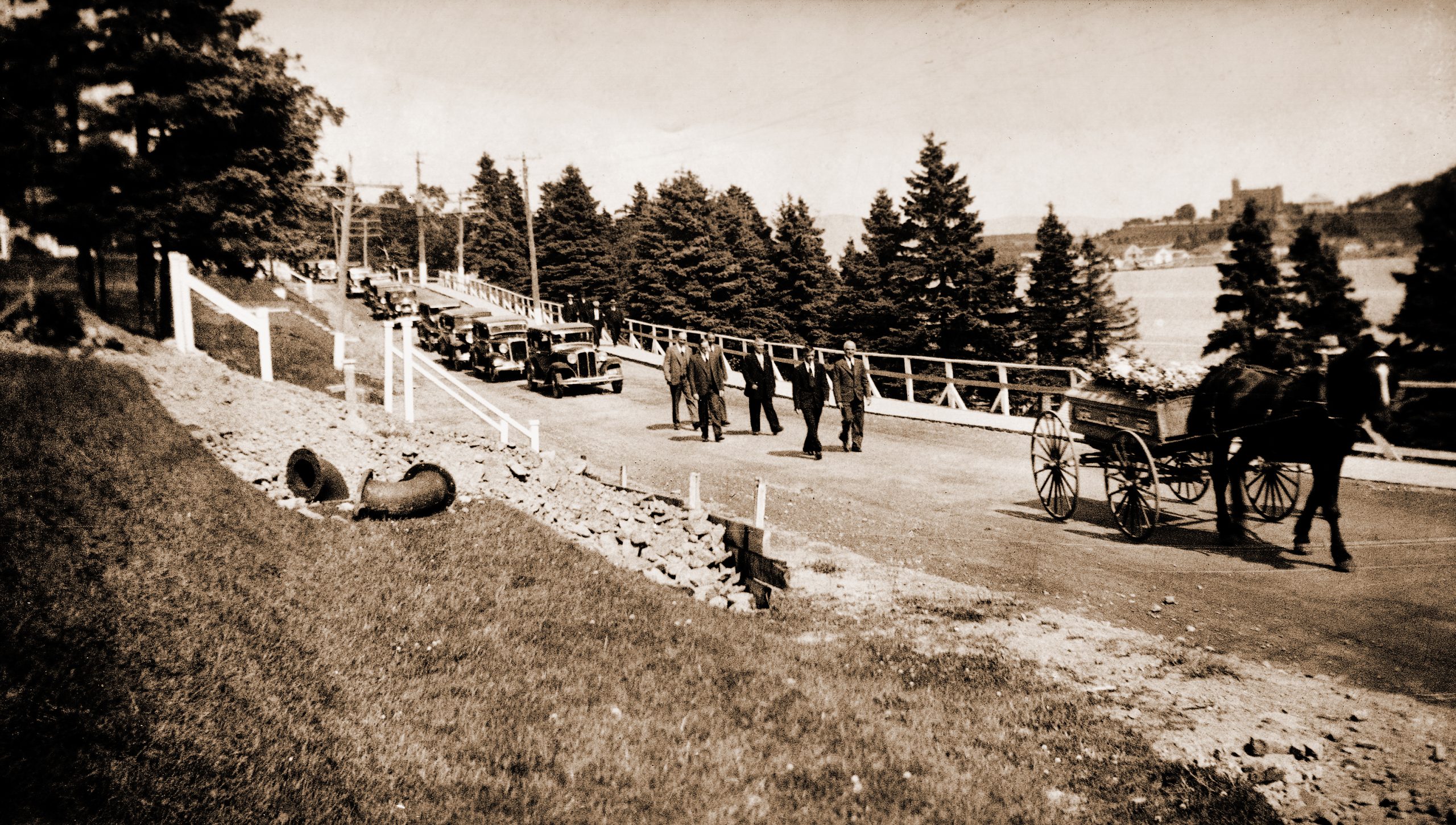
Death as a component of life
Death, like birth, was until only a few decades ago, an in house, en famille, experience. Most families (including my maternal and paternal) had a couple of people or someone in the community who took on the duties associated with death. Along with mid-wives, they were the gate-keepers of life and death. Pre-funeral parlour, and even post funeral parlour in some families, the body was washed at home, the clothes carefully chosen and put on, decisions made around jewelry to be added or removed, same for reading glasses. The casket holding the deceased, who had now become “the body”, was usually placed in the parlour or a sitting room, perhaps with doors to close intermittently. “I remember the dining room door being closed because the person who had died was in there and being shaved.” A dead person being in the house, while sad and often tragic, was part of life.
Family and friends sat in the parlour, sang hymns, prayed or just visited. Some avoided the space which had now become a zone of discomfort. In the 19th and into the early 20th century, men regularly wore black armbands to indicate they mourned someone in their family, a public figure, or a senior boss where they worked. Oral histories collected locally in the 1980s included several mentions of male family members wearing black armbands when Queen Victoria died in 1901.
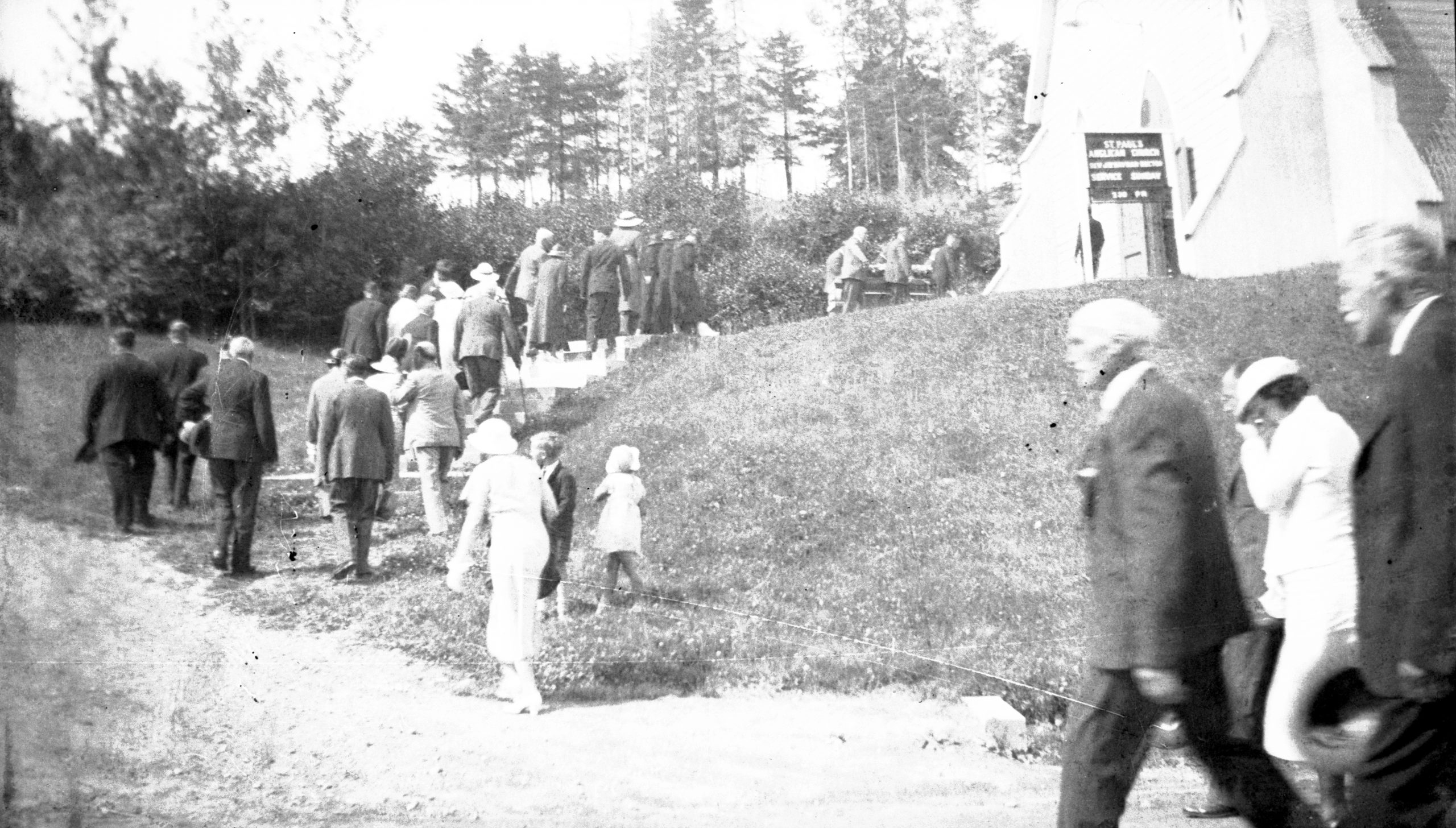
Various Anecdotes
Death was a family and community affair. What was needed was accomplished without a fuss and usually with little money. “A few years back we found brass handles in the barn. There were six of them. All matching. We didn’t know what they were for. Then someone told us they were to carry caskets. Brass handles were costly and not easy to come by. So the caskets, which were made in someone’s shed, would be fitted out with brass handles, then the handles would be unscrewed and taken off before the casket was lowered by ropes into the ground. The brass handles were then ready for the next casket.”
“I remember G B digging as he always did. My dad said, ‘Not too deep. There’s another fella down there.’ GB said, “Don’t you worry. We’re going to move the posts a little to the south.”
“My uncle C.E. could always be relied on to come out to help to dig a grave. I remember seeing him walk the mile and a half from his place to the graveyard, with his long-handled shovel over his back. And he was already well into his 1970s.”
Some families had their own traditions for the wake or at the burial. In the 1950s, the Le Touzel, a Gaspe family, prepared a grave in their usual manner: they lined the bottom and sides with chicken wire, then filled in the mesh with fir boughs. The casket would be lowered into a green nest, rather than a dark, damp hole. One person who attended such a funeral said to a grieving family member, “You do that so nicely, you Anglicans. We don’t do that in the Catholic church. I might become Anglican.” The family member explained that this was a family tradition, not an Anglican one!
“In the 1930s and 1940s, my father was in charge of preparing bodies in our community of Percé. He always kept a few ties in a drawer at home, believing that every man had the right to the dignity of wearing one, even if he didn’t own one.”
“My grandfather died December 26, 1940 and his funeral was held at the beginning of 1941. The old church had burned in 1939. They delayed the funeral a bit because of the Christmas season and they didn’t want the first service of the new year in the new church to be a funeral. It was interesting at home too. Some of the grandchildren were just little kids and no one wanted to do them out of Christmas. The main room was big, so they put the Christmas tree up at one end and the casket at the other. My mother wore red for the Christmas – New Year season before the funeral. She got a lot of criticism for that.”
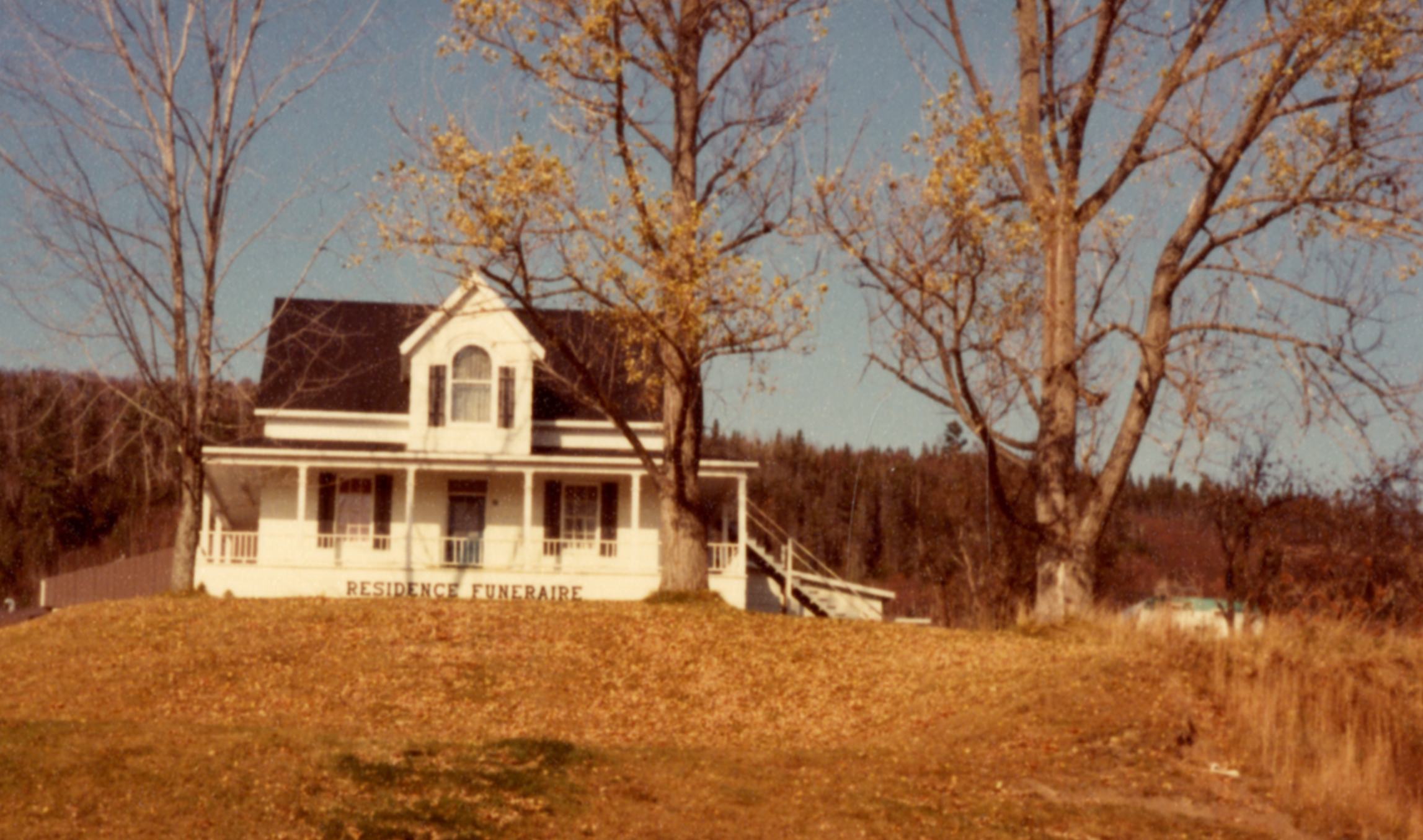
Parlour Stories
Gaspe’s first funeral parlour (funeral parlour, drawing on traditional usage of family parlour for the laying out of the dead and visitation at home, later to be referred to as funeral home) was in the basement of the first hospital. In June 1955, Ellen Patterson was laid out there for the wake. After a while, her daughter said, “This just isn’t working,” and took her home to Sunnybank where her family realized she truly belonged.
The second funeral home was a long, low unassuming building on the left side of upper Morin St. The third was a converted ancestral home on rue Jacques Cartier. The visitation area was not large, being the former living-room. When a grieving, shocked father / husband entered and took in the three caskets of his family crowding the space, he said to no one in particular: “Quite a room full.” The fourth and current funeral home (on the lot of the third) has already significantly expanded from its original sizable space, and was in recent years extended yet again.
The professionalization and commercialization of death rushed over us like a high tide. As did most rural areas, we clung on to as many of the old ways as we could. When still allowed, we waked our people in our family homes. In August 1989, a family matriarch waked in her Gaspe home was checked by her long-time hairdresser before the room was opened to visitors. Anticipating by experience that the deceased’s hair might not have been done to her habitual style by the funeral parlour, the hairdresser had come equipped. She shook her head, said “This won’t do. Mrs. K. would not have put up with that look,” and whipping out brush, comb, curling iron and hair spray, made the necessary adjustments.
“I went downstairs to the mortuary to check out my mum’s hair in 1995. As I suspected, it needed work. The mortician who accompanied me was visibly uncomfortable in the presence of ‘raw death,’ my mum’s body not yet made into something else by his colleagues. I remember, he backed up to the wall and pressed himself against it. I thought that was pretty funny.”
Gradually, people began to be discouraged from waking people in their home. Some were told a fee would be charged by the funeral business if that was done. Some families chose to hold these pre-funeral hours or days in their church so that a measure of intimacy and control could be exercised. No extra fee could be charged for that.
Coming Home
Embalming extended the possible time span between death, funeral and burial. This meant family members, which following WW2 tended to live at greater distances from their home town, could still make it home to see their loved one one last time and for the funeral. People travelled hundreds and thousands of miles over roads that in many places were still gravel. But they made it home.
“My great uncle died in February 19,1958 in Ottawa. He was brought home on the train, as a lot of Gaspsians were. It was bitterly cold and the ground was frozen hard. No equipment other than shovels used then for digging. They had to build a fire on the earth when the snow was cleared off. And they had to keep that fire going until it was soft enough to dig. I was at what was then Gaspe High School. No trees grown up to block the view. I could see the fire being kept. Took them two days to dig that grave.”
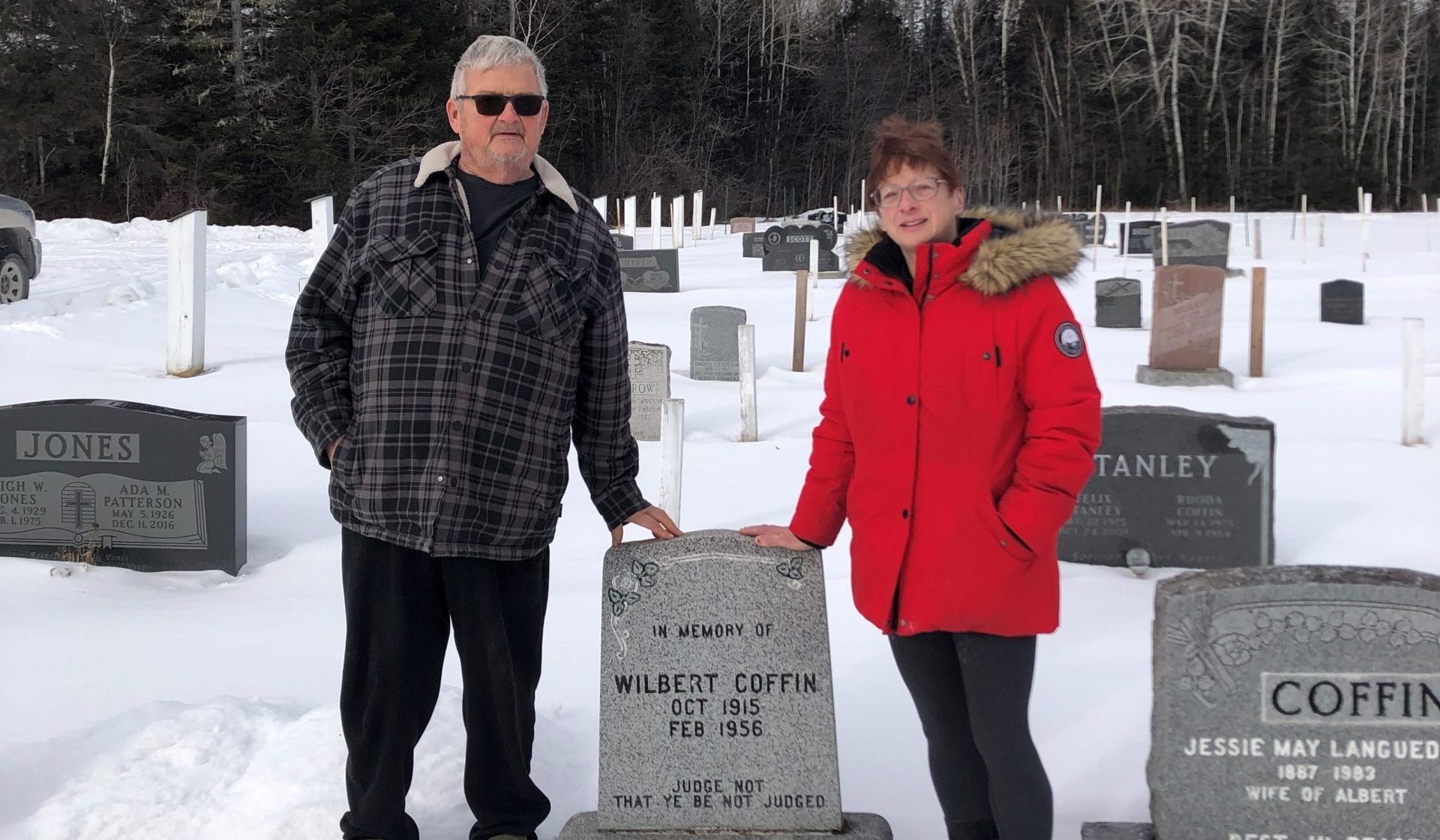
The body of Bill Coffin, tragically hanged in what still awaits to be legally deemed a miscarriage of justice arrived in Gaspe train station in Feb. 1956. “The day my mum and my sister brought Bill’s body home, it was unbelievable, the crowd at the station,” recalls Marie Stewart, Wilbert Coffin’s sister.
The importance to families and communities of bringing someone home by train for burial was cited as one of many reasons not to close the Barachois train station during transportation commission hearings in the summer of 1985. The station was saved, a wry observer noting we had tried to build a case around a corpse.
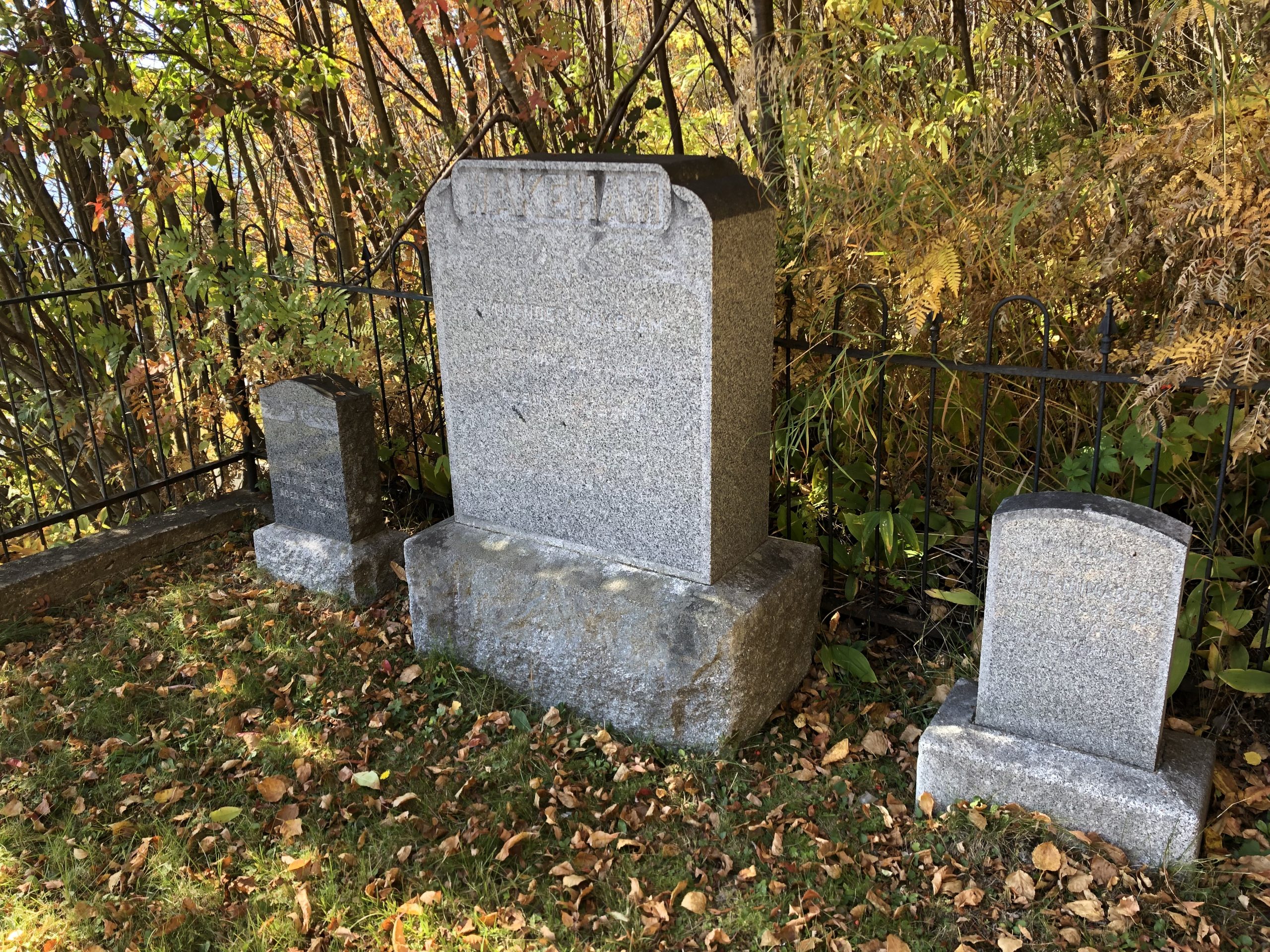
The Role of Women
In 1976 the Anglican Church ordained its first women priests. They now began to officiate at funerals, including in our region.
In 1991 in Gaspe a daughter shared with her aunt that she wished she could be a carrier of her mother’s casket. Her aunt thought that a good idea and the two daughters and their aunt joined the three male carriers. The under-taker had reservations on two counts: one, it had not been done before and two, would the women be strong enough. They were and a local precedent was set. Three long-handled shovels were provided and the three women also filled in the grave. In 1995 this role for women was expanded upon by the same family when six women carried the casket of their grand-mother / great-aunt / friend. The funeral business expressed concern about the physical capacity of all women carriers. “You can’t do it. It’s too heavy.” But they did it and another precedent was set.
The Small Box Funeral
Cremation was the next major shift in funeral traditions. Whereas embalming had extended the time lapse between death and funeral by several days, cremation extended it indefinitely. At first, cremation remained fairly rare. Now it is the local norm, what my great uncle termed, “The small box funeral”.
Cremation is practical, during COVID, essential. But it raises critical questions about the grief process. Do we put our grief on hold while we wait for a time next summer convenient to family vacations? Does the small box or urn placed usually much later in a church or funeral business, rather than a heavy casket carried within days of death lighten the heaviness in our hearts? Does the gravitas of the traditional funeral increase or resonate with the depth of our grief? Does the more recent use of the term “Celebration of Life” underscore the positive of both this life lived and the possibility of the next? Or does it distract from the reality of death’s loss?
The Words We Choose
Why do more and more people use the term “passed” in English rather than “died”? It seems many who use this word do not necessarily believe the person they say has “passed” is going to another level of being. So, passed to where and what? Is passed a way of not saying dead? Is the neon green astro-turf that outlines the large rectangle or small square grave meant to spare our eyes from the reality of an open hole? Is the discrete passing from white-gloved funeral employee to priest of a slender bottle of ground from wherever, intended for use during the passage of the prayer of committal “ashes to ashes, dust to dust” meant, like a slight of hand, to encourage those present not to notice the often-covered mound of earth?
Our legal right in Quebec to spread ashes is a great aid to people who for a variety of reasons may not want interment in a cemetery. Another option is the purchase of a niche in a columbarium if the family wants a place to visit the one who has “passed”. A tree may be planted in memory of someone, or a bench placed in a park. Our ways of responding to death have pushed far beyond the traditional cemetery fence.
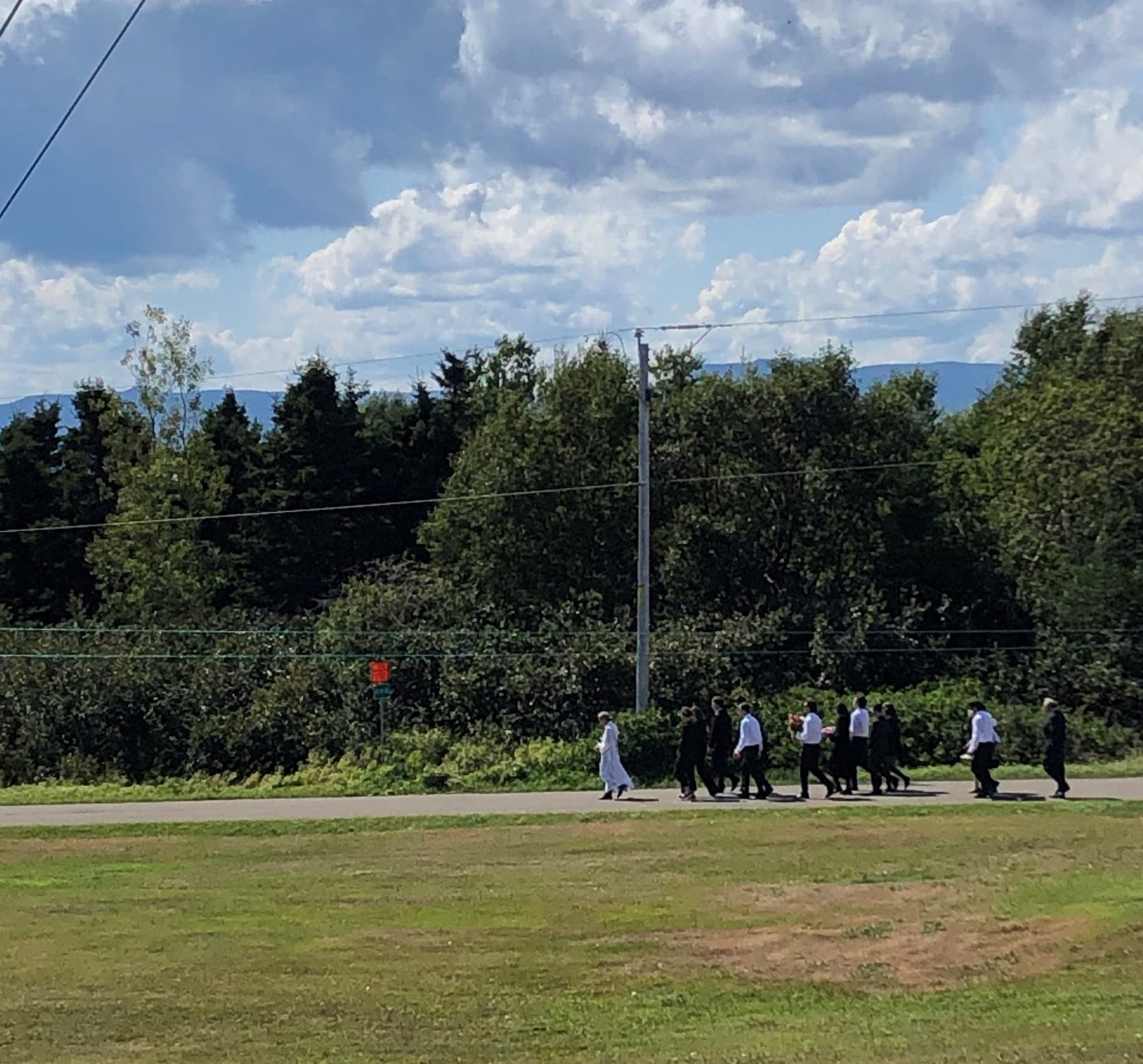
The Last Words
Eulogies were frowned upon by Anglican clerics in the Gaspe area through most of the 1980s. The reasons given us then were that such presentations shifted focus from the sacred to the secular and ran the risk of becoming competitive. Gradually family and friends secured for themselves the ability to give this last gift of remembrance of a life: demanding, draining, sometimes a balancing act of tension recalling a complex story.
The very last words can be found on a tombstone. Consider the scripture chosen for Wilbert Coffin by his mother: « Judge not that ye be not judged ».
Photos (in order)
Funeral procession for the death of William Munro, Main Street, towards St. Paul’s Church in Gaspé, 1935.
Photo: J. Napoléon Gérard jr
Musée de la Gaspésie. Fonds J. Napoléon Gérard jr. P15/A/3a/3/5
People arrive for William Munro’s funeral at St. Paul’s Anglican Church in Gaspé, 1935.
Photo: J. Napoléon Gérard jr
Musée de la Gaspésie. Fonds J. Napoléon Gérard jr. P15/A/3a/3/7
Valère Fortin Funeral Home in Gaspé, 1982.
Musée de la Gaspésie. Fonds Vera Patterson
Gravestone of Wilbert Coffin at St. Andrew’s Cemetery in York (Gaspé area), with his nephew and niece, Ron and Diane Stewart.
Photo: Cynthia Patterson
The household of Dr. and Commander William Wakeham is united in death as it lived: together. In the only plots in St. Paul’s Cemetery in Gaspé surrounded by a fence and wrought-iron gate, stand three headstones. The largest, in the center, is that of Wakeham, who died at age 70 in 1915. To his left lies Helen Margaret Davis, who died at age 57, also in 1915. To his right is the headstone of Jane Ellen Coffin Dumaresq, who died at age 91 in 1920. Wakeham left his estate to Jane, who in turn was to leave it to his niece, Helen, who, sadly, died before she could inherit it. Questions, more numerous than answers, continue to intrigue those who visit the site.
Photo: Cynthia Patterson
Funeral procession arriving at St. Peter’s Cemetery in Saint-Georges-de-Malbaie, 2025.
Photo: Cynthia Patterson